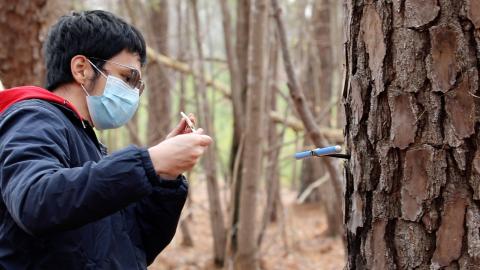Duke University has been a GCSE member since 2009. Duke University’s Nicholas School of the Environment provides opportunities for purpose-driven individuals to learn about or pursue careers that make positive contributions to the environment and the world. Students of the Nicholas School are bright, talented and ambitious people from across the globe who study a broad range of environmental topics including conservation, climate change, and everything in between.

The Nicholas School is located in North Carolina in a region known as the Research Triangle. The school is located in close proximity to marine, forest, and mountain ecosystems and boasts world-class facilities and research centers. The 70,000-square-foot home of the Nicholas School has been designed to meet or exceed the criteria for LEED Green Building platinum certification, and incorporates state-of-the-art green features and technologies inside and out.
In addition to the Nicholas School’s main facilities, they also boast a Marine Laboratory located in coastal, historic Beaufort, North Carolina. The Marine Laboratory operates year-round to provide educational, training, and research opportunities to about 3,500 people annually.
The Nicholas School develops environmental leaders through an undergraduate academic program designed to provide an understanding of the Earth and of environmental ethics and a professional master's program that provides the next generation of environmental professionals with the skills needed to devise and implement effective environmental policies and practices in the public, private, and non-profit sectors. The PhD program is dedicated to developing world-class scientists, researchers, and educators in the environment.
Did you know?
The Duke Forest - another important resource for Nicholas School students and faculty - comprises just over 7,000 acres of land, lying primarily in two counties adjacent to the Duke University campus in Durham, North Carolina. This forest is used primarily as a resource for educational and research opportunities.